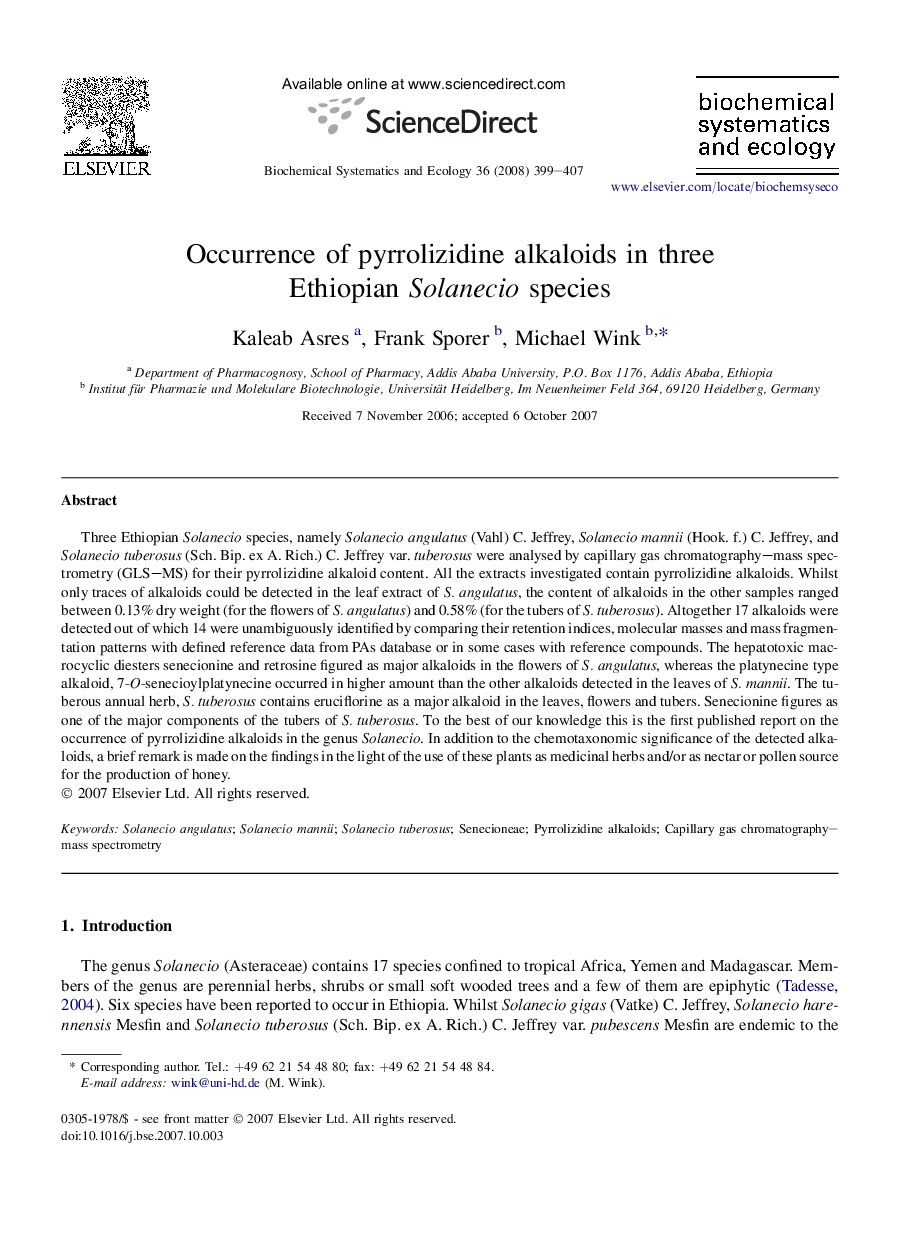| Article ID | Journal | Published Year | Pages | File Type |
|---|---|---|---|---|
| 1354767 | Biochemical Systematics and Ecology | 2008 | 9 Pages |
Three Ethiopian Solanecio species, namely Solanecio angulatus (Vahl) C. Jeffrey, Solanecio mannii (Hook. f.) C. Jeffrey, and Solanecio tuberosus (Sch. Bip. ex A. Rich.) C. Jeffrey var. tuberosus were analysed by capillary gas chromatography–mass spectrometry (GLS–MS) for their pyrrolizidine alkaloid content. All the extracts investigated contain pyrrolizidine alkaloids. Whilst only traces of alkaloids could be detected in the leaf extract of S. angulatus, the content of alkaloids in the other samples ranged between 0.13% dry weight (for the flowers of S. angulatus) and 0.58% (for the tubers of S. tuberosus). Altogether 17 alkaloids were detected out of which 14 were unambiguously identified by comparing their retention indices, molecular masses and mass fragmentation patterns with defined reference data from PAs database or in some cases with reference compounds. The hepatotoxic macrocyclic diesters senecionine and retrosine figured as major alkaloids in the flowers of S. angulatus, whereas the platynecine type alkaloid, 7-O-senecioylplatynecine occurred in higher amount than the other alkaloids detected in the leaves of S. mannii. The tuberous annual herb, S. tuberosus contains eruciflorine as a major alkaloid in the leaves, flowers and tubers. Senecionine figures as one of the major components of the tubers of S. tuberosus. To the best of our knowledge this is the first published report on the occurrence of pyrrolizidine alkaloids in the genus Solanecio. In addition to the chemotaxonomic significance of the detected alkaloids, a brief remark is made on the findings in the light of the use of these plants as medicinal herbs and/or as nectar or pollen source for the production of honey.
